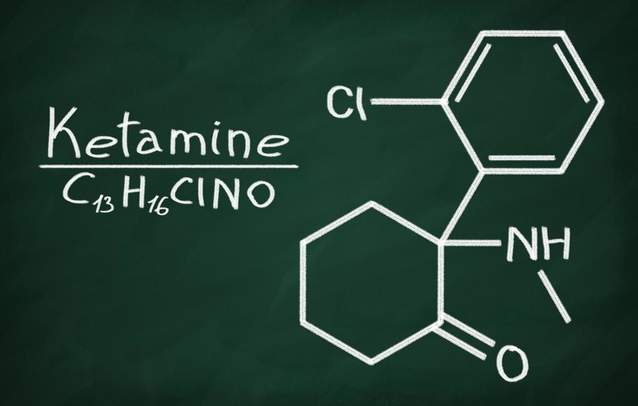A colleague of mine told an audience that ketamine treatment is like putting fertilizer on the garden. You will still have to tend the garden and decide what you want to grow there. It is an opportunity for you to express the unexpressed and start to make changes in the patterns in your life that are no longer serving you.
Please feel free to listen to the playlist and watch the videos below to get a sense of potential considerations and themes that the experience may bring out for you.
These videos are meant to inspire potential psychological themes you may experience during ketamine treatment
Spotify Playlist
Regarding the Transpersonal Nature of Ketamine Therapy: An Approach to the Work
Jeffrey Becker
Private Practice Westwood, CA, USA
Recent evidence has shown that ketamine treatment can facilitate psychological insight and symptom resolution in various psychiatric disorders. To aid this process, psychotherapeutic support should be considered a fundamental aspect of treatment. The psychedelic experience produced by ketamine can be a deeply meaningful source of enduring change and personal growth. The author has repeatedly observed a rapid realignment of self-perception away from shame, fear, and dread toward authentic self-acceptance and gratitude, offering patients opportunity for insight and the consideration of new potentialities. The experience produced by ketamine is similar in quality to transpersonal experiences described by Jung and induced by various religious practices and near-death experiences.
A framework for understanding psychedelic psychotherapy by Dr Rosalind Watts PhD
The use of the psychological flexibility model to support psychedelic assisted therapy
Journal of Contextual Behavioral Science
Ethical Considerations with Ketamine Therapy
December 2020 Volume: 2 Issue: 4
ISSN: 2690-0912
The Journal of Psychedelic Psychiatry
The ethical ketamine clinician recognizes that there are different approaches to ketamine treatment, and that each approach has advantages and drawbacks. The ethical ketamine clinician is skillful with the specific treatment(s) that they offer. In addition, the ethical ketamine clinician is familiar with all of the major routes of administration, different dosing strategies, and different conceptual para- digms for therapeutic ketamine treatment.
• The ethical ketamine clinician under- stands and appreciates the importance of integrative psychiatric and psychological care for therapeutic ketamine patients (i.e., using multiple strategies to get better and stay well). The ethical ketamine clinician takes the time to explain this to each patient and helps patients to connect to these resources in their community.
• The ethical ketamine clinician practices within the scope of their professional license, and they recognize their limit- ations with respect to their professional training and experience. They actively seek consultation as needed, and they make referrals to other professionals as needed.
The uses of ketamine have been studied in many contexts.
Ketamine can reduce harmful drinking by pharmacologically rewriting drinking memories
Nature Communications 10, Article number: 5187 (2019)
Maladaptive reward memories (MRMs) are involved in the development and maintenance of acquired overconsumption disorders, such as harmful alcohol and drug use. The process of memory reconsolidation - where stored memories become briefly labile upon retrieval - may offer a means to disrupt MRMs and prevent relapse. However, reliable means for pharmacologically weakening MRMs in humans remain elusive. Here we demonstrate that the N-methyl D-aspartate (NMDA) antagonist ketamine is able to disrupt MRMs in hazardous drinkers when administered immediately after their retrieval. MRM retrieval + ketamine (RET + KET) effectively reduced the reinforcing effects of alcohol and long-term drinking levels, compared to ketamine or retrieval alone. Blood concentrations of ketamine and its metabolites during the critical ‘reconsolidation window’ predicted beneficial changes only following MRM reactivation. Pharmacological reconsolidation interference may provide a means to rapidly rewrite maladaptive memory and should be further pursued in alcohol and drug use disorders.
Journal of Psychoactive Drugs 19, Volume 39 (1), March 2007
Single vs repeated Ketamine-Assisted Psychotherapy for heroin dependent people
Evgeny M. Krupitsky, M.D., Ph.D et al.
Psychedelic-assisted psychotherapy utilizes the acute psychological effects of psychedelic, or hallucinogenic, drugs to enhance the normal mechanisms of psychotherapy. Many studies carried out in the 1950s and 1960s suggested that psychedelic-assisted psychotherapy might be an efficient treatment for alcoholism and addictions (Grinspoon & Bakalar 1979).
One of the insights gained from previous research concerns the transient psychotherapeutic and psychological effects of psychedelic psychotherapy. The effects of psychedelic psychotherapy are often very pronounced within several days or weeks after a treatment session, but then these effects quickly decline (Halpern 1996). This phenomenon was termed a “psychedelic afterglow.” Pahnke and colleagues (1970) described an afterglow as a positive post-hallucinogen state occurring in subjects after they have a transcendent psychedelic peak experience.
If a psychedelic-peak experience has been achieved and stabilized during the session, a clinical picture which we have termed the psychedelic afterglow can be observed in the days after the session. Mood is elevated and energetic; there is a relative freedom from concerns of the past and from guilt and anxiety, and the disposition and capacity to enter into close interpersonal relationships is enhanced. These psychedelic feelings generally persist for from two weeks to a month and then gradually fade into vivid memories that hopefully will still influence attitude and behavior. During this immediate postdrug period, there is a unique opportunity for effective psychotherapeutic work on strained family or other interpersonal relationships.
Ketamine is a drug used for anesthesia that acts as an NMDA receptor antagonist. Sub-anesthetic doses produce profound transformative experiences that share many elements with some near-death experiences (Jansen 2001). Previous studies have found that this experience often causes important insights about the self and the world, and can help people accept a new meaning of life, new values and new purpose in life related to abstinence from drugs and alcohol (Krupitsky et al. 2002; Krupitsky & Grinenko 1997).
Efficacy of ketamine therapy in the treatment of depression
Indian J Psychiatry. 2019 Sep-Oct; 61(5): 480–485.
Single dose of ketamine has rapid action on depressive symptoms, and this action persists even for a week, which suggests its possible role in neuroplasticity. Many studies showed remission of depressive symptoms 1-week postinfusion.[5] A recent meta-analysis showed antidepressant efficacy from day 1 in patients of unipolar and bipolar depression.[6] The neuropsychiatric effect of subanesthetic dose of ketamine helps in the management of suicidal ideation and reduces self-harm or suicide in addition to the reduction in depressive symptoms.[7] Open-label studies have shown that one-time intravenous (i.v) ketamine led to rapid improvement of treatment-resistant depression and the quickest significant antidepressant response was noted within 2 h and slowest within 4 h.[8] Another study done in India on 27 patients of treatment-resistant depression (TRD) with single i.v dose of ketamine infusion showed short-lasting improvement in suicidal ideation and depression.[9] No significant adverse physical effects are reported in with low-dose ketamine and S-ketamine in antidepressant trials till date.[10]

Transpersonal Effects of Ketamine
There is no consensual opinion regarding how psychedelic substances might work beneficially within clinical settings. Most of the researchers view the active mechanisms of psychedelic substances solely from a biochemical perspective. Ketamine is often considered a “psychomimetic” (i.e., causing effects mimicking psychoses), prompting some US investigators to use ketamine-induced phenomena as a model for studying psychoses in experimental research (e.g., Krystal et al., 1994). In this model, the psychedelic effects of ketamine are seen as undesirable rather than as a potential therapeutic mechanism.
Contrary to this view, we propose that ketamine’s powerful psychotherapeutic effect is possibly due to its psychedelic-including transpersonal experience generating-properties, as it frequently induces in sub-anesthetic doses feelings of ego dissolution and loss of identity, emotionally intense visions, visits to mythological realms of consciousness, vivid dreams and memories of possible past incarnations, experience of the psychological death and rebirth of the ego, and feelings of cosmic unity with humanity, nature, the universe, and God. These observable facts were initially described as “emergence phenomena” (White et al., 1982) and clearly depict a psychedelic experience. These non-ordinary states of consciousness offer an additional or alternative mechanism of ketamine’s effects over and above purely biological explanations.
One of us (Friedman, 2006) previously speculated that psychedelic drugs such as ketamine are specifically useful due to their transpersonal, rather than solely neurobiological, effects. This is also congruent with the conclusions of numerous researchers that spiritual factors are crucial in treating many psychological problems, such as is frequently discussed for alcoholism (e.g., Robinson, Brower, & Kurtz, 2003; Amodia, Cano, & Eliason, 2005).
Grof (1980) has developed a comprehensive theory of psychedelic psychotherapy from this perspective. He concluded that psychedelic substances facilitate therapeutic experiences of symbolic death and rebirth of the ego, allowing clients to work through deep traumatic fixations in their unconscious. Grof successfully applied this specific transpersonal psychotherapeutic approach to more than 750 patients. He explicitly discouraged his clients from analyzing their psychological problems and instead assisted them in transcending their inflexible maladaptive patterns, placing a strong emphasis on their transpersonal growth potential. Although Grof primarily used LSD as a psychotherapeutic agent, he acknowledged that ketamine holds great promise due to its “affinity for positive dynamic systems” (p. 214). He stated that the psychoactive effect of ketamine is so powerful that “it catapults the patient beyond the point of impasse from the previous LSD session, and can make it possible for him or her to reach the better level of integration” (p. 214).
Ketamine and Ketamine Metabolite Pharmacology: Insights into Therapeutic Mechanisms
